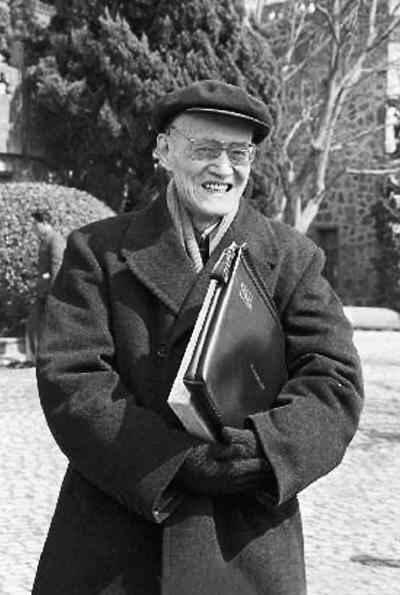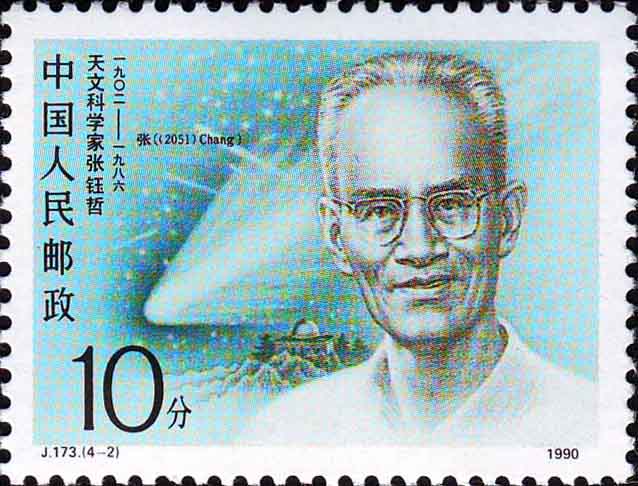Today we discuss something on polynomials.
Over a Commutative Ring
Let A be a commutative unital ring, and A[x] the polynomial ring over A.
Let f=a_0+a_1x+...+a_n x^n. If a_1,a_2,...,a_n are nilpotent, so will be f-a_0. If moreover a_0 is invertible, f will be invertible; if instead a_0 is nilpotent, f is nilpotent. The converses are both true. For nilpotency, the highest degree term of f^m is a sole a_n^m x^m, if f is nilpotent, a_n is forced to be; but then f-a_n x^n is again nilpotent. For invertibility, immediately a_0 is invertible; Suppose fg=1 with g=b_0+b_1x+...+b_r x^r. Then a_n b_r=0,a_n b_{r-1}+a_{n-1} b_r=0,.... Multiplying the second by a_n, we get a_n^2 b_{r-1}=0; repeating this yields a_n^{r+1} b_0=0, and b_0 is invertible so a_n is nilpotent.
In particular, these implies the nilradical \mathfrak{N}=\mathfrak{R} in polynomial rings. If f\in\mathfrak{R}, then 1+xf is invertible. This means a_0,...,a_n are all nilpotent, hence f nilpotent. In the proof of the Hilbert Nullstellensatz, we will see that this is valid also in prime quotients of polynomial rings.
If f is a zero-divisor, then a_0,..,a_n are all zero-divisors. Indeed, if fg=0, then a_n b_r=0, and f a_n g =0, with \mathrm{deg} a_n g<\mathrm{deg} g. Repeating this, eventually a_n g=0. This yields (f-a_n x^n) g=0. Then a_i g=0,a_i b_n=0,\forall i.
A general version of Gauss’s lemma holds: if (a_0,...,a_n)=(1), then f is said to be primitive. If f,g are primitive, then so is f g. The proof is analogous: If (c_0,...,c_n)\in\mathfrak{p} for some maximal p, then in (A/\mathfrak{p}[x], we have f g=0. Since this is a domain, either f,g is 0, a contradiction.
The above is easily generalized to several variables (actually arbitrarily many, since a polynomial always involves only finite terms), keeping in mind A[X_1,...,X_n]=A[X_1,...,X_{n-1}][X_n].
The case of power series is different in many aspects. First, if f=a_0+a_1 x+..., then f is invertible if and only if a_0 is. This is because suppose g=b_0+b_1 x+..., then f g=a_0 b_0 + (a_0 b_1+a_1 b_0)x+(a_0 b_2+a_1 b_1+a_2 b_0)x^2+... where a_i can be solved inductively as long as a_0 b_0=1. Second, although f nilpotent implies a_i nilpotent for all i, via some similar induction focusing on the lowest degree term, the converse is not true. In fact, there are some restrictions on the vanishing degree: if f^s=0, then a_0^s=0, so (f-a_0)^{2s}=0; then a_1^{2s}=0, so (f-a_1 x)^{4s}=0. In general a_i^{2^i s}=0. If the least s_i for a_i^{s_i}=0 increases rapidly, making 2^{-i} s_i\rightarrow\infty,i\rightarrow \infty, then f is not nilpotent. For example take s_i=3^i,A=\prod_{i\in\mathbb{Z}^+}\mathbb{C}[x_i]/(x_i^{s_i}),a_i=x_i. The argument also applies in the polynomial case, but then n is finite.
If 1+g f is invertible iff 1+a_0 b_0 is invertible. So f\in\mathfrak{R}(A[[x]]) iff a_0\in\mathfrak{R}(A).
The ideal F(\mathfrak{I}) of f with a_0\in \mathfrak{I} is an ideal of A[[x]]. Moreover A/\mathfrak{I}\cong A[[x]]/F(\mathfrak{I}). So if \mathfrak{I} is prime, so is F(\mathfrak{I}); same for maximality. In fact, the same holds in A[x].
The above topic is from Atiyah, M. F.; MacDonald, I. G. (February 21, 1994). «Chapter 1: Rings and Ideals». Introduction to Commutative Algebra. Westview Press. p. 11. ISBN 978-0-201-40751-8.
The case of countable variables is also of interest. We will discuss this in later posts.
Thursday, August 1, 2013

